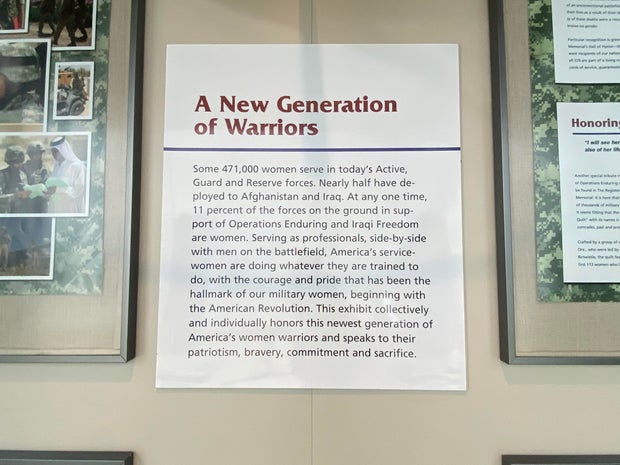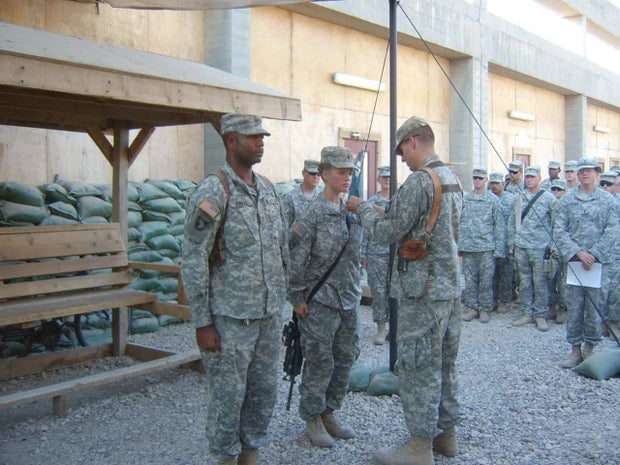The knock at the door came at nighttime on Mother’s Day 2008 in Oregon, where Jessica Ellis’ parents lived. It was around 9:20 p.m. and his wife, Linda, was already in bed; her father Steve Ellis told CBS News, that he thought someone let their animals out — but two soldiers in Class A uniforms were standing at the door.
“You know why they’re there. I mean, they don’t have to say a thing,” Steve Ellis said.
Military Women’s Memorial
Ellis, a combat medic assigned to the 2nd Brigade Special Troops Battalion, 2nd Brigade Combat Team, 101st Airborne Division in Iraq, had volunteered a second time for a mission to clear a route. It was her second deployment to the region. She primarily accompanied combat engineers on clearance missions to look for roadside bombs, but this time, their vehicle was hit by three projectiles. Everyone had to exit through a back door. Ellis didn’t make it. She was 24 years old.
“Neither one of us envisioned losing a daughter in combat,” her father said. “Life is never really the same after that.”
Rising numbers of women in the military, rising fatalities
Women make up about 16% of the nation’s military – the largest percentage in America’s history, partly fueled by the opportunity to serve in all positions including combat. But as the number of women serving in the military has grown, so have fatalities.
Since the global war on terror began in 2001, 179 female military members have been killed in action – surpassing other U.S. wars or engagements. Eight military women were killed in Vietnam.
“The Department of Defense is proud of the bravery and sacrifice made by all service members who have given their lives in defense of our nation,” a spokesperson told CBS News.
Military Women’s Memorial
Still, said Marilla J. Cushman, the president’s senior adviser at Military Women’s Memorial, a D.C.-based organization that tells the collective story of women’s service, women have made great strides and are now serving at every level in the military.
She said women are “driving tanks, commanding thousands of people, and flying fighter planes,” something that wasn’t possible when she served in the Army for 25 years.
“I would be proud to stand beside any of these women,” Cushman said.
The ultimate sacrifice
Ellis’ parents met their daughter’s colleagues at Fort Campbell in Kentucky so they could learn more about what happened that night.
“She was such a happy child, she had a warm personality and she lifted her unit up – we got met by hundreds of men and women there,” said Steve.
Her father said they gave her the nickname “Doc Ellis.” He said her buddies told them that even after she was gone “she kept saving lives.” They explained to her parents that she trained them all to stop bleeding and they used her technique often after she was gone.
Courtesy Steve Ellis
Just a few weeks before she was killed in action, her father said she had gone out on a similar mission. Her vehicle got hit and she called her parents to them, her father recalled.
“She said her vehicle burned and her aid bag burned,” Steve said. “We told her to be careful. But that was the last time we ever talked to her… about three weeks later she was killed.”
Her colleagues helped them piece together what happened. Ellis borrowed an aid bag and volunteered to go back out again. Last April, one of her female medic buddies told her parents that Ellis’ injuries from the first blast were worse than they knew. One of her legs got infected from the burn, he said the friend told them. But she didn’t want to let her buddies down, Ellis said.
Courtesy Steve Ellis
“Talk about courage she went back out there, she volunteered to go back to our on the mission. There were 21 guys and her, she volunteered to go out again with burns on her leg,” said Steve.
Ellis was emblematic of a combat military that is sacrificing so much to safeguard our freedoms, he said. These women, he said, were dedicated in their service, their sacrifice, and for some “the ultimate sacrifice for their country.”





